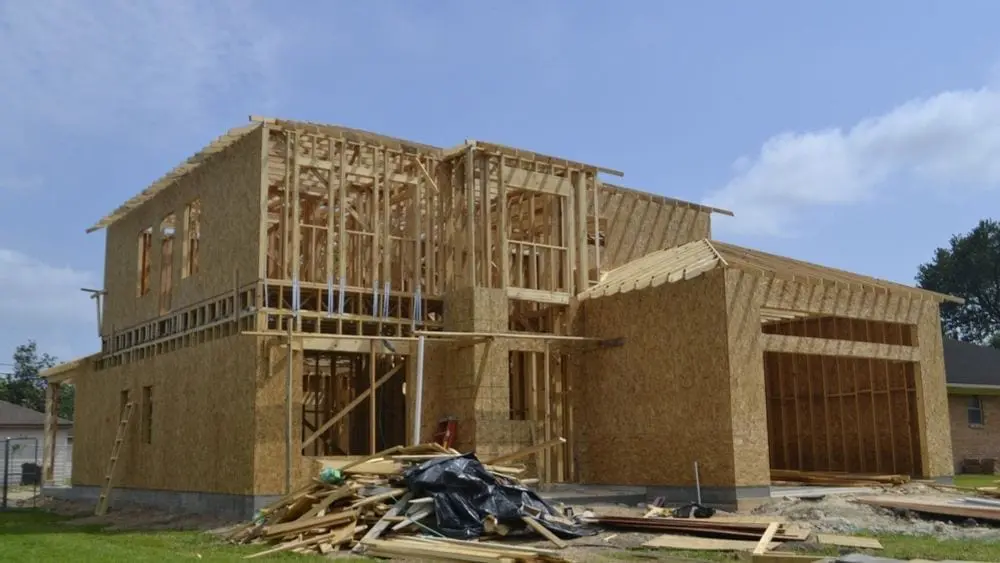
If the sun rises in the east and sets in the west, then positioning a home should be easy, right? In reality, the sun rises and sets in a slightly different place each day, so the summer sun and winter sun follow quite different paths. And sunlight isn’t the only consideration when it comes to positioning a home! Let’s delve into the various factors that determine the ideal position for your new home when building on your own lot.
Direction of the Sun
There is no single answer here because what’s good for a house in Florida wouldn’t suit a home in Oregon. In Florida, for example, you’d likely want to keep direct light and warmth at bay, in which case you’d expand your north-facing windows. To maximize light and warmth in a place like Oregon, use a larger expanse of windows that face south.
Contractor Mike Holmes of Holmes Makes It Right on Canada’s HGTV points out, “The north side of a house tends to get hit by more precipitation, which can wear down exteriors prematurely. You might notice over winter that north-facing homes in your neighborhood will accumulate more snow on their driveways. The north side of roofs will have more snow, too. That’s because the sun isn’t beating down on it all day — it’s over on the south side of the house — so the snow doesn’t melt as fast.”
Weather Forecasts
You will also want to be aware of your property’s microclimate, especially if you are near mountains, hills, or bodies of water. For example, a home built between two hills will likely be caught in a wind tunnel and experience stronger winds. To limit the effects, position your home in such a way that you can plant trees to provide a windscreen.
Or perhaps you’re living in a place prone to rain or hurricanes; you’ll want to ensure your home is positioned in a way that optimizes drainage. A small piece of advice: If you live in a mountainous area, you’d want to live halfway up the mountain. Being near the peak will expose you to strong winds, while too near the bottom is more flood-prone.
Yard Use
If your family wants a playable yard – either with a swing set, treehouse, or a sandbox when young or for sports practice when older – you’ll likely want a backyard that is bigger than the front. If you’re planning for a vegetable garden on the other hand, that extra land space might be allocated to the side of the home instead. Spend some time thinking about how you’ll be utilizing the outdoor space around your home, to make the most use of your land.
Street Appeal & Privacy
Your front yard can also be a playscape for kids, but perhaps more importantly, gorgeous landscaping increases street appeal, as well as resale value if you ever decide to sell your home. Not a fan of spending much time doing yardwork? A smaller front yard will be easier to maintain. If privacy and distancing your home from a noisy street are greater priorities for you, a larger front yard with a house that is set far back from the road is more ideal.
Floor Plans
Positioning the outer walls of your new home isn’t the only positioning you should be thinking about. Also, consider how rooms are positioned within the house. According to Nick and Ben Gromicko of The International Association of Certified Home Inspectors, you should “orient the floor plan – not merely the building’s profile – toward the sun. Design the home so that frequently used rooms, such as the kitchen and living room, are on the southern side. Occupants will appreciate the sun rays in the winter and relief from the sun in the summer. Patios and decks should be built on the south side of the house, where direct sunlight will permit their use for more hours during the day and more days during the year.”
Even if you’re working with a builder who has a library of floor plans, they can make necessary modifications to suit you. If you’re not a morning person, you likely won’t want your master suite facing east; and no matter what, you’ll want it in the most secluded part of the house (not next to the front door or garage). Planning the interior layout will make living in your home that much more enjoyable.
Views & Visability
While there are dozens of shows to binge watch on Netflix or Hulu, consider the views you’ll be presented with from within the home. This could be anything from a peaceful lake or inspiring mountain range to your neighbor’s master bedroom or garage. If you have a corner lot, with your garage facing a street, keep in mind that you won’t have any visibility of that street without windows from your main home. Consider security and comfort when it comes to deciding what will be within line of sight from the windows of your home.
If you don’t feel like you can make a confident decision about these, talk to your builder! They have the expertise necessary to guide you through this process and optimally position your home for comfort, energy efficiency, and that important balance of community connection and privacy.
Ready to begin the process of building a custom home? Visit NewHomeSource today to check out thousands of builders and beautiful new homes.

For the last 16 years, Rachel Kinbar has been a writer of articles, blog posts, white papers, essays, infographics, web copy, sales copy, scripts, poetry, lyrics, and more. She has keen research skills that she applies to a wide variety of topics, and she especially loves topics related to design, history, and sustainable living.
 Home Style Guide: Modern Homes
Home Style Guide: Modern Homes